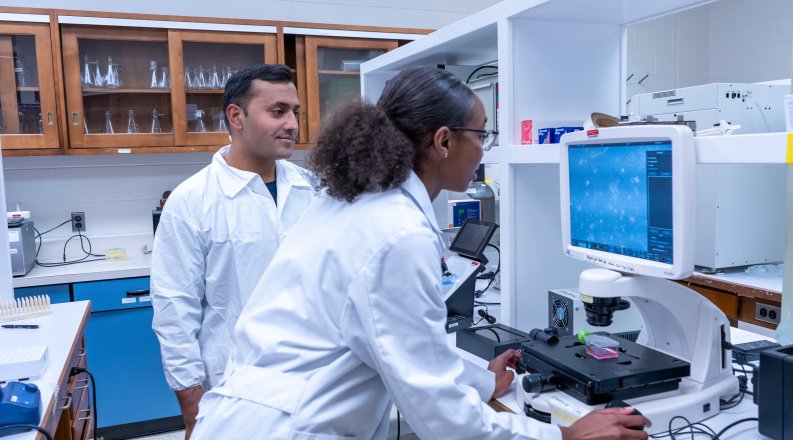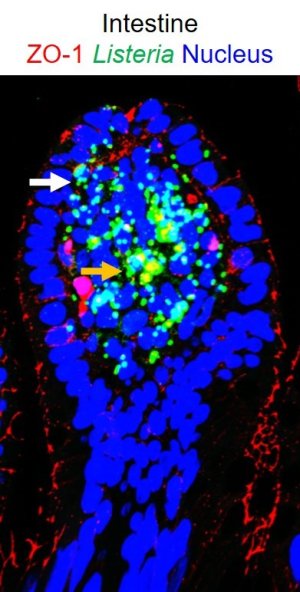By Tiffany Whitfield
Old Dominion University Biological Sciences Assistant Professor Rishi Drolia’s, Ph.D. research titled, “Listeria adhesion protein orchestrates caveolae-mediated apical junctional remodeling of epithelial barrier for Listeria monocytogenes translocation” was recently published in mBio, a top journal from the American Society of Microbiology. Drolia’s research uncovers how listeria enters the gastrointestinal tract causing health-related complications and it is spread to some of the most vulnerable demographics in the population, covering from infancy to the elderly. The recent CDC report on a multi-state Listeria outbreak linked to cheese underscores the critical significance of comprehending how this bacterium infiltrates its hosts. This comes at a time when 26 cases of illness, including 23 hospitalizations and two fatalities, have already been reported due to the outbreak.
“Listeria monocytogenes is a foodborne pathogen with high mortality (20%–30%) and hospitalization rates (94%), particularly affecting vulnerable groups such as pregnant women, fetuses, newborns, seniors, and immunocompromised individuals,” said Drolia. People contract listeria by eating contaminated food such as processed meats and dairy products. Once the bacteria has been absorbed in the intestinal walls, more organs, such as the liver, spleen, brain, and the placenta of pregnant women, are infected. People who get infected from listeria can have symptoms including sepsis, meningitis, encephalitis, and brain abscess.
This particular project focused on understanding the mechanism of how listeria crosses the first crucial barrier, the intestinal barrier. “Listeria is cytosolic, which means it binds to receptors in the intestinal cells and triggers this intricate pathway, which was discovered in this paper,” said Drolia. This invasive bacterium uses the Listeria adhesion protein (LAP), which leads to “disruption of the tight junctions by endocytic mechanisms which allows it to cross the intestinal barrier.” He, along with Prof. Arun K. Bhunia and collaborators at Purdue University, have studied this protein for 12 years. Determining the pathways Listeria uses in a human-relevant relevant in-vivo model helps to decipher the exact mechanisms by which LAP and another important surface protein, internalin A (InlA), and the pathogen cooperatively work to cross the human intestinal barrier.
This understanding is vital in combating the severe consequences of Listeria monocytogenes infections that can render long-suffering symptoms or end in death. The World Health Organization estimates that globally, more than 20,000 people contract listeriosis every year, and about 5,000 cases are fatal.
Several graduate and undergraduate students who are mentees of Drolia contributed to the paper and this impactful research including ODU Biomedical Sciences doctoralstudent Zuri A. Jules-Culver, along with the following graduate students from Drolia’s previous institution Eastern Kentucky University: Donald B. Bryant, Jessie Thind, and Breanna Amelunke.
Drolia has always been fascinated by microbes. “When I was young, my mother always used to tell me that it's the small things that create the largest problem, and we know that from COVID,” said Drolia. “But I have been trained as a bacteriologist, and I have always been interested in bacteria, specifically intracellular pathogens.” Listeria is a facultative intracellular pathogen having the ability to enter and replicate inside cells.
“Moving forward, my goal is to come up with preventive and therapeutic mechanisms because of the big problem of antibiotic resistance; we need to come up with better approaches to restrict this deadly pathogen, especially in vulnerable populations, young, old, pregnant, and immunocompromised,” said Drolia.




